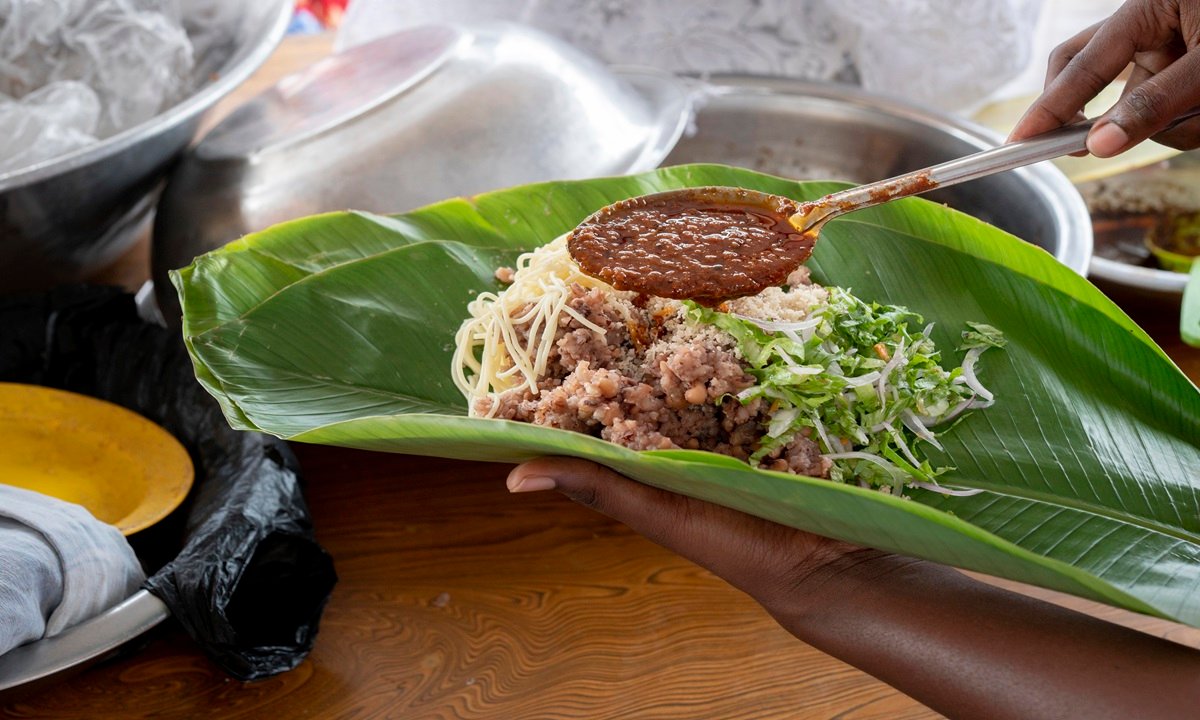There’s no better way to explore a country than through its food—and authentic street foods to try in Southeast Asia are a delicious place to start. Each bite tells a story of local life, heritage, and flavor. Whether you’re strolling through a night market in Bangkok or sharing a meal with locals in Vietnam, street food is the heart and soul of the region.
In this guide, we’ll walk you through the top 10 dishes you absolutely must try, where to find them, local insights to enhance your experience, and what fillings or toppings make them even better. Hungry? Let’s dig in!
Table of Contents
ToggleWhy Southeast Asian Street Food Is a Must-Try?
What makes authentic street foods to try in Southeast Asia so special? It’s the mix of traditional techniques, fresh ingredients, and vibrant food cultures. Recipes are passed down for generations, with each vendor adding their unique twist.
These aren’t fancy restaurant meals. They’re soul food—cooked in woks, grilled over coals, and sold from carts, stalls, and tiny kitchens that have become local legends. Plus, it’s affordable, fast, and bursting with flavor.
Top 10 Authentic Street Foods to Try in Southeast Asia
Here are the top must-try southeast Asian street foods list. Enjoy every bites of different taste and explore the beauty of southeast Asian countries:
1. Pad Thai – Thailand
Pad Thai is Thailand’s most iconic noodle dish—sweet, sour, salty, and nutty all in one plate. It’s a fast favorite among travelers and locals.
Top fillings: Shrimp, tofu, chicken, or mixed seafood. Often topped with peanuts, lime, chili flakes, and fresh bean sprouts.
Where to try:
- Bangkok: Head to Thip Samai Pad Thai, a legend in the city.
- Chiang Mai: Try the Chang Phuak Gate Night Market for excellent budget versions.
Local insight: Thai diners often adjust flavor at the table—adding sugar, fish sauce, or chili to personalize each bite.
2. Bánh Mì – Vietnam
Bánh mì is the ultimate Vietnamese sandwich. A crispy French-style baguette is stuffed with meats, vegetables, herbs, and sauces.
Top fillings: Grilled pork, pâté, chicken, Vietnamese cold cuts, eggs, sardines, or tofu for vegetarian versions.
Where to try:
- Bánh Mì Huynh Hoa in Ho Chi Minh City is wildly popular.
- Bánh Mì 25 in Hanoi offers fresh, creative combinations.
Local insight: Locals eat bánh mì for breakfast or as a quick lunch on the go. It’s fast, flavorful, and cheap.
3. Char Kway Teow – Malaysia
This smoky stir-fried noodle dish is rich and indulgent, made over a blazing hot wok for that signature seared taste (wok hei).
Top fillings: Chinese sausage, prawns, cockles, bean sprouts, chives, egg, and sometimes lard bits for extra richness.
Where to try:
- Siam Road Char Kway Teow in Penang is legendary—expect long waits.
- Jalan Alor in Kuala Lumpur has a wide range of quality vendors.
Local insight: The secret is in the charcoal wok and high heat. Many stalls use duck eggs for added creaminess.
4. Nasi Lemak – Singapore
Nasi lemak is the national pride of Malaysia and Singapore. It’s a fragrant coconut milk rice dish with savory and spicy sides.
Top fillings: Sambal (spicy sauce), fried anchovies, peanuts, egg, cucumber, fried chicken, rendang (beef), or sambal squid.
Where to try:
- Village Park Restaurant in Kuala Lumpur is a must for fried chicken nasi lemak.
- Chong Pang Nasi Lemak in Singapore is a late-night hotspot.
Local insight: Traditionally a breakfast dish, but now eaten any time of day. Wrapped in banana leaves when served takeaway-style.
5. Balut – Philippines
Balut is one of the most unique and daring foods you’ll find—a fertilized duck egg boiled and eaten whole, embryo and all.
Top fillings: It’s all in the egg! Some versions are served with salt, chili, or vinegar on the side.
Where to try:
- Quiapo Market, Manila – a classic local spot.
- Roxas Night Market, Davao – great for adventurous food lovers.
Local insight: Locals enjoy it with a cold beer. Sip the broth first, season with vinegar or salt, then eat the rest.
6. Mohinga – Myanmar
Mohinga is Myanmar’s unofficial national dish: a savory fish broth noodle soup loaded with herbs, spices, and crunch.
Top fillings: Rice noodles, crispy lentil fritters, banana stem, hard-boiled egg, and cilantro.
Where to try:
- Myaung Mya Daw Cho Mohinga in Yangon is well-loved for flavor and consistency.
- Street vendors across Yangon sell fresh bowls in the early morning.
Local insight: Mohinga is a breakfast favorite but is increasingly served all day in urban areas.
7. Amok Trey – Cambodia
Amok trey is a creamy fish curry, gently steamed in banana leaves and filled with local spices and herbs.
Top fillings: White fish (often catfish), coconut milk, kaffir lime, turmeric, lemongrass, and egg.
Where to try:
- Romdeng Restaurant in Phnom Penh offers a high-quality version.
- Psar Chas Market in Siem Reap features local-style servings.
Local insight: Amok is considered a festive dish—served during celebrations and family gatherings.
8. Laap – Laos
Laap is a meat salad that’s bold and tangy—made with lime juice, herbs, chili, and toasted rice powder for crunch.
Top fillings: Minced chicken, pork, beef, fish, or mushroom for veggie options. Always served with sticky rice.
Where to try:
- Luang Prabang Night Market – tons of local stalls.
- Vientiane riverside eateries for fresh fish laap.
Local insight: Laap is served at weddings and new year events—it’s considered a “lucky” dish representing health and wealth.
9. Martabak – Indonesia
Martabak is a stuffed pancake with both savory and sweet options. Crispy on the outside, warm and gooey inside.
Top fillings (savory): Minced beef, egg, green onions, and garlic.
Top fillings (sweet): Chocolate, condensed milk, peanuts, cheese, and bananas.
Where to try:
- Jakarta’s street corners, especially at night.
- Sanur Night Market in Bali has multiple martabak vendors.
Local insight: Families often share martabak as a late-night snack. It’s rich, filling, and totally addictive.
10. Khao Niew Mamuang – Thailand
This dessert is a sweet and comforting mix of sticky rice soaked in coconut milk with ripe mango slices on the side.
Top fillings: Glutinous rice, coconut milk, palm sugar, ripe mango, toasted sesame seeds, or crispy mung beans.
Where to try:
- Mae Varee in Bangkok serves premium versions year-round.
- Chiang Mai Night Bazaar also offers affordable and delicious options.
Local insight: Best enjoyed during mango season (April–June). Vendors may offer variations with durian or coconut ice cream.
How to Enjoy Southeast Asian Street Food Like a Local
Look for long lines – If locals are waiting, it’s worth it.
Watch it being made – Hot, fresh food is usually the safest and tastiest.
Don’t fill up too fast – Try smaller portions so you can sample more.
Ask questions – Vendors are often proud to share their food’s story.
Bring cash – Most stalls don’t accept cards, so keep small bills handy.
FAQs
1. Are authentic street foods in Southeast Asia safe to eat?
Yes, especially when bought hot and fresh. Pick busy stalls, avoid uncooked items, and stay hydrated with bottled water.
2. Is Southeast Asian street food spicy?
Some dishes are, but spice levels vary by country. You can usually request less chili or customize it to your taste.
3. Can vegetarians enjoy these dishes?
Absolutely! Look for tofu-based Pad Thai, vegetarian laap, or sweet options like mango sticky rice and martabak.
4. What time is best for street food markets?
Evenings are the most vibrant. Morning markets are best in Myanmar and Laos, while night markets thrive in Thailand and Malaysia.
5. Do you need to tip at street food stalls?
Tipping isn’t expected, but rounding up the bill or showing appreciation with a smile is always welcome.
Conclusion
There’s no better way to connect with a culture than through food. The authentic street foods to try in Southeast Asia go beyond taste—they reveal the stories, traditions, and creativity of locals. From crispy bánh mì in Vietnam to steaming bowls of Mohinga in Myanmar, each dish is a doorway to discovery.
So, pack light, carry cash, and follow the scent of sizzling woks—you’re in for the tastiest journey of your life!






